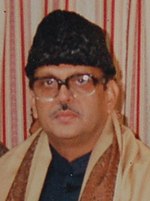POST INDEPENDENT INDIA
India was under British rule for almost 200 years.
15th August 1947 India earned its independence with great sacrifices and difficulties. The same day it was divided into two different countries, India and Pakistan.
The freedom brought loads of happiness and a new set of problems and the responsibilities of handling them.
Effects of partition of India
- Communal Violence and refugee crisis
- Problems in the integration of princely states into the federal structure
- Damaged economic system
- Challenge of creating own constitution
- Need to protect the hard-earned freedom from its enemies
- Social inequality due to gender and caste-based discrimination
Firstly, the country got stuck in the communal fire. Millions of people from both countries left their homes, finding a future in the other. It was a great challenge to offer shelter and food to refugees who arrived in the country. The number of people who came to India was much more than the number that went to Pakistan.
Secondly, the integration of princely states into the federal structure of India was a bigger problem. There were 562 princely states in India by then. Many states approved to join the Indian federal arrangement after the initial hesitation. But, Kashmir and Junaghad in the north and Hyderabad in the South were not ready to join. Sardar Vallabhabai Patel handled this challenge efficiently and won success. He was successful in protecting the internal security of the nation. He also set in motion the task of attaining National integration.
Thirdly, partition had damaged the economic system of India deeply. There was a need to relook into commerce, industry, and trade to provide better financial stability. The colonial power had abused the resources of India for more than two centuries. DadabhaiNavaroji has discussed this issue more in his “Drain theory”
Fourthly, India had the challenge of creating its constitution. It had to find its stability under its new constitution to emerge as a democratic republic. Under the chairmanship of Dr.B.R.Ambedkar, the Constitutional Drafting committee gave India a draft constitution. It got acknowledged by the Constituent Assembly and gave India a unique constitution. This draft enabled the strengthening of the executive, legislative, and judiciary systems.
Fifthly, India had to protect its freedom from its enemies. It started toughening its military forces also. The present military power of India is nowhere less to anyone now. We need to look back into history to know about its humble beginning.
Sixthly, since gender and caste-based discrimination was natural to Indian society, there was a need to maintain public relationships and connections to establish social equality.
It also had to formulate new foreign policy and make arrangements for financial resources. India successfully faced all these challenges and emerged as the largest democratic country in the world.
How did the government handle this situation?
Communal Violence
India is a country of many religions due to countless invasions of foreign rulers. The British used this diversity to their benefit by creating a “Divide and Rule” policy.
As a result, the never-ending clashes between Hindus and Muslims resulted in violence, countless deaths, and other miseries.
When India was celebrating its independence in New Delhi, Gandhiji was in Naukali and other places in meeting the victims consoling them.
Nehru, the first Prime Minister of Independent India, made this issue a priority and could calm down the communal violence within months after independence.
The extent of this communal violence made Nehru think about forming a secular (not connected with any religion) nation. These incidents helped India to adopt secular principles in its constitution.
In the Constitution of India, religion is a personal choice of an individual. But as a nation, it has no religion but is secular.
Refugee Crises
Partition forced people to leave their native places and move to different locations where people from their religion were a majority. Many Muslims moved to Pakistan from Indian regions. Similarly, Hindus moved to the Indian side. This shift caused the refugee crisis.
Around 6 million refugees arrived in India. This crisis increased in the beginning. By the end of 1951, these refugees from West Pakistan got settled.
But the crisis of East Pakistan (Bangladesh) continued for a long time. Bangladesh was in severe communal violence soon after the partition. As a result, the refugees were arriving till 1971.
India supported Bangladesh with The Bengal Vimochana movement leading Bangladesh to liberate itself from Pakistan.
The war resulted in the arrival of 10 lakh refugees to India.
The government of India and the state governments of Tripura, Meghalaya, and Assam helped the new refugees to resettle and find new hope for life in India.
Since most of the refugees from Bangladesh knew Bengali, they attempted to settle in Bengal more. As a result, there was stress on West Bengal.
During the 1960s and 1970s, India faced an economic crisis. Major famines destroyed our financial security. Still, India did not leave its humanitarian concern and tried to provide better refugee facilities for them.
The people of Tibet arrived in our country as refugees during Nehru time. According to one estimate, there are around one lakh and twenty thousand Tibetan refugees in India.
In 1960, the Government of Karnataka sanctioned 3000 acres of land to Tibetan refugees at Bylukuppe. Now it has grown as one of the largest Tibetan settlements in India.
Despite all these problems, the arrival of this variety of refugees has enriched our cultural diversity.
The hardship of forming a new government of independence
Soon after the declaration of independence, an interim government got assembled.
Lord Mountbatten became the Governor-General of India.
Jawaharlal Nehru became the first Prime Minister of India.
On 26th January 1950, the Indian Constitution got adopted. With the implementation of the Constitution, Dr. BabuRajendraprasad became the first President of India.
The new constitution declared India as the Sovereign, democratic republic. Later in 1976, through the 42nd amendment, the words “Secular and Socialist” were added into the constitution.
The government of India followed an independent foreign policy. India adopted a parliamentary type of democracy.
The Parliamentary democracy:- The Constitution Drafting Committee studied different constitutions from other countries and concluded that parliament elected by people should be the ultimate authority in governance. It rejected the Presidential type of democracy.
Integration of Princely States
There were 562 princely states when the British left India. Apart from partitioning India, they gave three options open for the remaining princely states:
- Joining India
- Joining Pakistan
- Remaining Independent
Through its “Instrument of Accession,” the Government of India offered an opportunity for the princely states to join the federal structure of India. In return for the accession, it proposed revenue sharing based on the actual income of the state in the form of royalty.
Additionally, the ruling Kings got some special status granted. These royalties and status got removed later in 1971.
During the integration of Indian Princely States, tough opposition came from Junagadh, Jammu and Kashmir, and Hyderabad states.
Under the leadership of Valalbahabai Patel, the government successfully integrated the princely states into the Indian federation. Thus Valalbahabai Patel is known as the Iron Man of India.
Junagadh
The Nawab of this princely state had signed the agreement to join the state of Pakistan. His citizens revolted against him and flooded the streets. The King fled from the Kingdom. The Dewan of the state requested the Indian government for military help to maintain law and order. Later, Junagadh joined the Indian federation in 1949.
Hyderabad
Nizam was ruling this princely state. He wanted to remain independent and refused to join Independent India. Meanwhile, under the leadership of communists, the farmers from the state revolted against the Nizam and Zamindars. The people were angry with the heartless troops called Razacks, which had the patronage of Nizam. The Government of India sent its military to fight Hyderabad and defeated the Nizam, and integrated Hyderabad into India in 1948. Valalbhabai Patel found the solution to this issue with his firm decision.
Jammu and Kashmir
The King of Jammu and Kashmir Harisingh decided to remain independent. Fearing that Kashmir may join the Indian federation, Pakistan instigated the tribal Muslims to invade Kashmir. The tribal band of people occupied more areas of Kashmir.
Unless the King decides to join India, the military of India could not enter Kashmir. Finally, on releasing the severity of the problem, King Harisingh agreed to join India in October 1947.
Later, the Indian Army attacked the invading tribal soldiers and drove them out of the valley. At this moment, the issue got reported to UNO. One part of Kashmir remained with Pakistan. India complained at UNO against Pakistan on this issue. UNO issued a battle truce on 1st January 1949.
The North-East part of Kashmir occupied by Pakistan continues to be with it and is called Pakistan Occupied Kashmir. The acquisition of Jammu and Kashmir is different from all the other accessions.
Pondicherry
Even after independence, the French had continued their hold over Pondicherry, Karikal, Mahe, and Chandranagar. Many political parties like Congress, Communists, and others wanted them to become part of India. As a result, all these parts got integrated in 1954. Pondicherry became the Union Territory of India in 1963.
Goa
A sustained campaign got held to protest against the Portuguese occupation of Goa. Despite being ordered to vacate Goa, the Portuguese brought more armies from Africa and Europe in an attempt to consolidate their power over Goa. Sathyagrahis from all over India entered Goa and declared the exit of the Portuguese from Goa in 1955. The Indian military entered Goa and took over its administration. Goa had remained a union territory till 1987 and later became a state.
Reorganization of states based on languages
The language-based formation of states was a demand present during British India also. After the independence of India, this demand became more and more severe.
But neither the British nor the regional governments ruled these states using the local language.
In this background, the formation of states based on languages was in demand.
The demand for language-based state reorganization increased after the death of Potti Sriramulu. He died after 54 days of a hunger strike demanding Vishalandhra.
As a result, in 1953, Andhrapradesh was formed.
In 1953 “the Reorganization of State Commission” was formed. Mr. Fazal Ali became the president, K.M.Pannikker and H.N. Kunjru became its members.
Based on the report of this commission, “the State Reorganization Act” was brought into effect. Fourteen states and six union territories got formed under this act.
Kannada-speaking regions were part of various princely states. On 14th October 1947, Mysore State came into existence. The demand to integrate all these people into one state was prevalent. They formed All Karnataka Rajaya Nirmana Parishad and demanded overall integration of the Kannada-speaking world.
Finally, in 1956, Vishala Mysore state came into existence. In 1973, it was named Karnataka. Presently, there are twenty-nine states and seven union territories in India, including Delhi.














